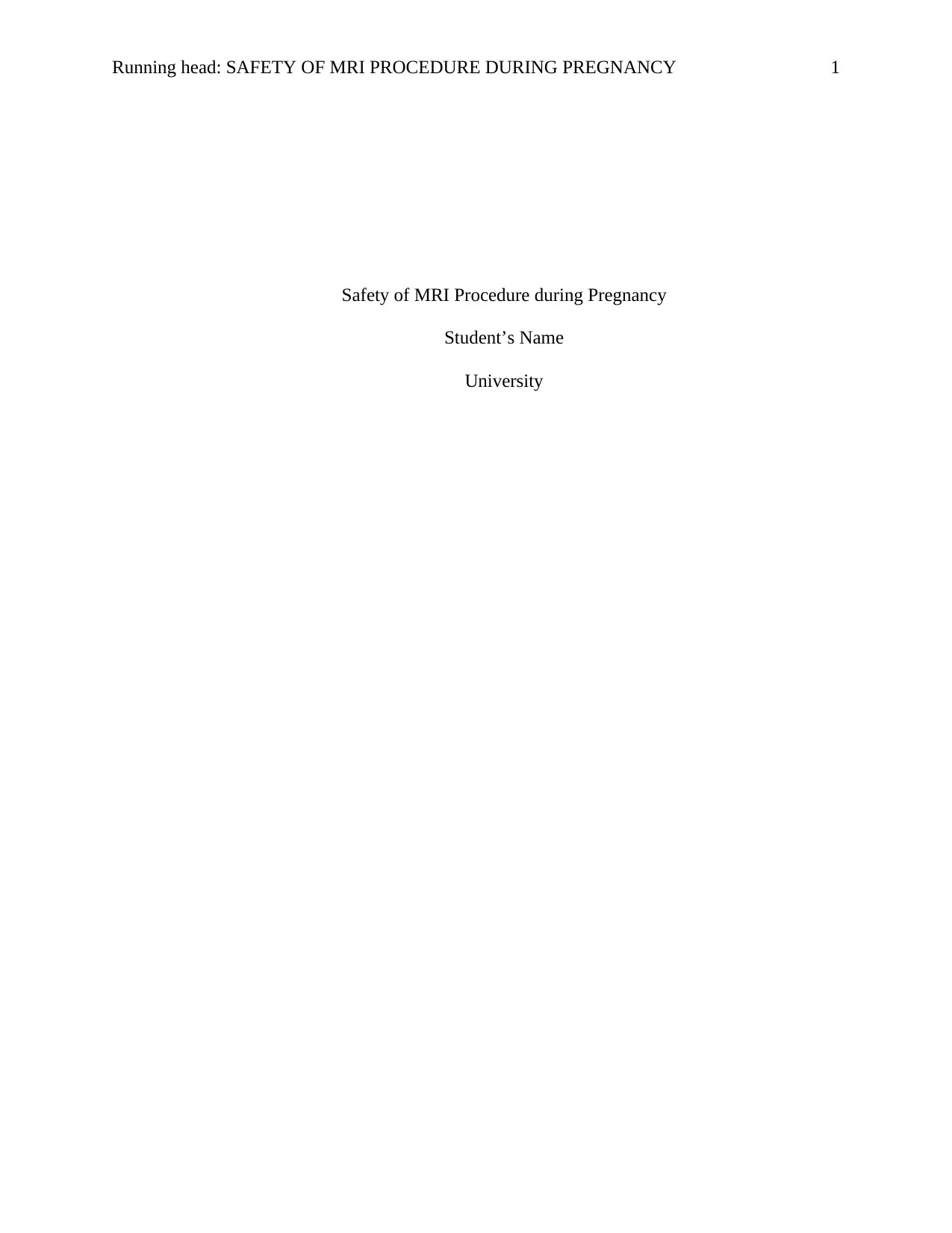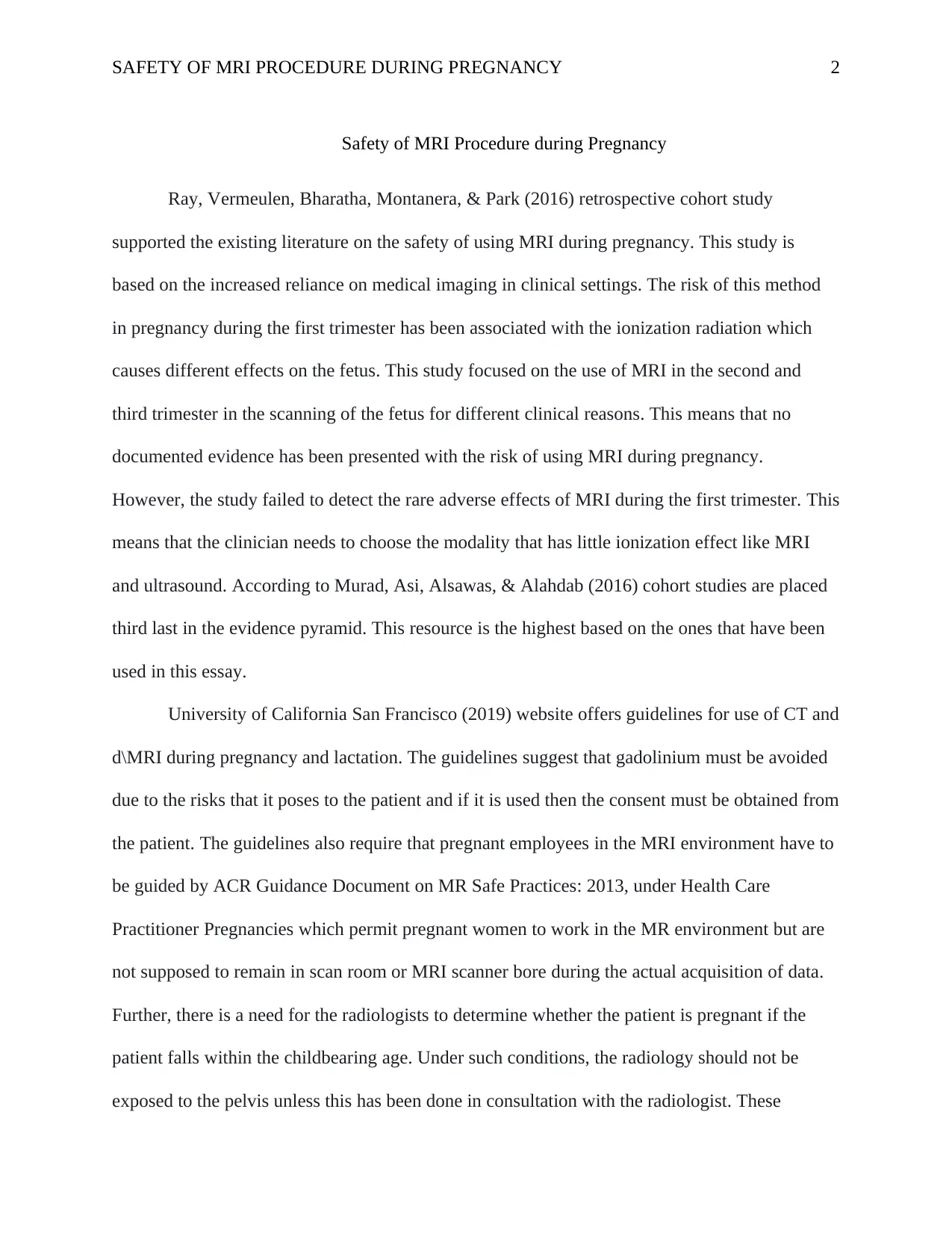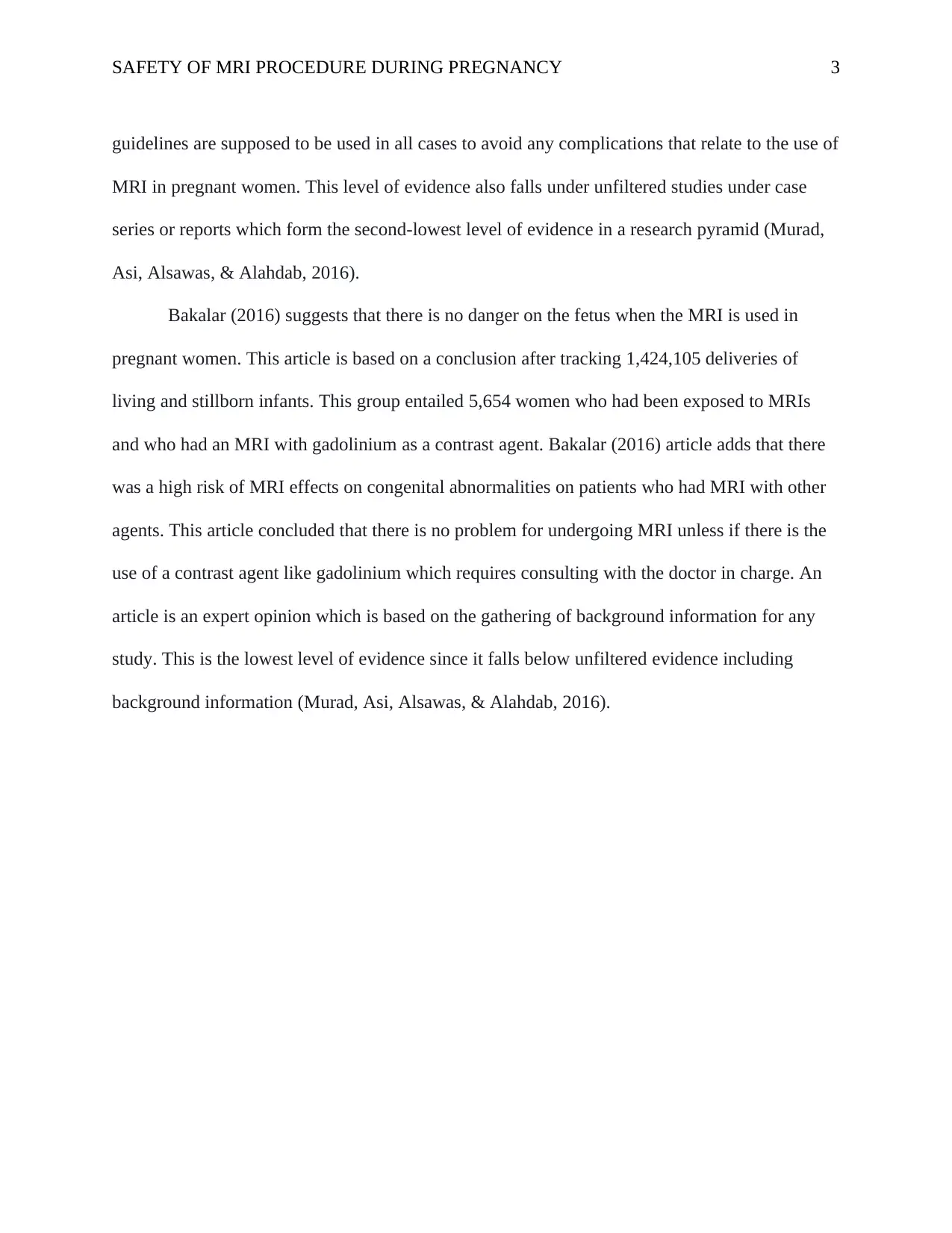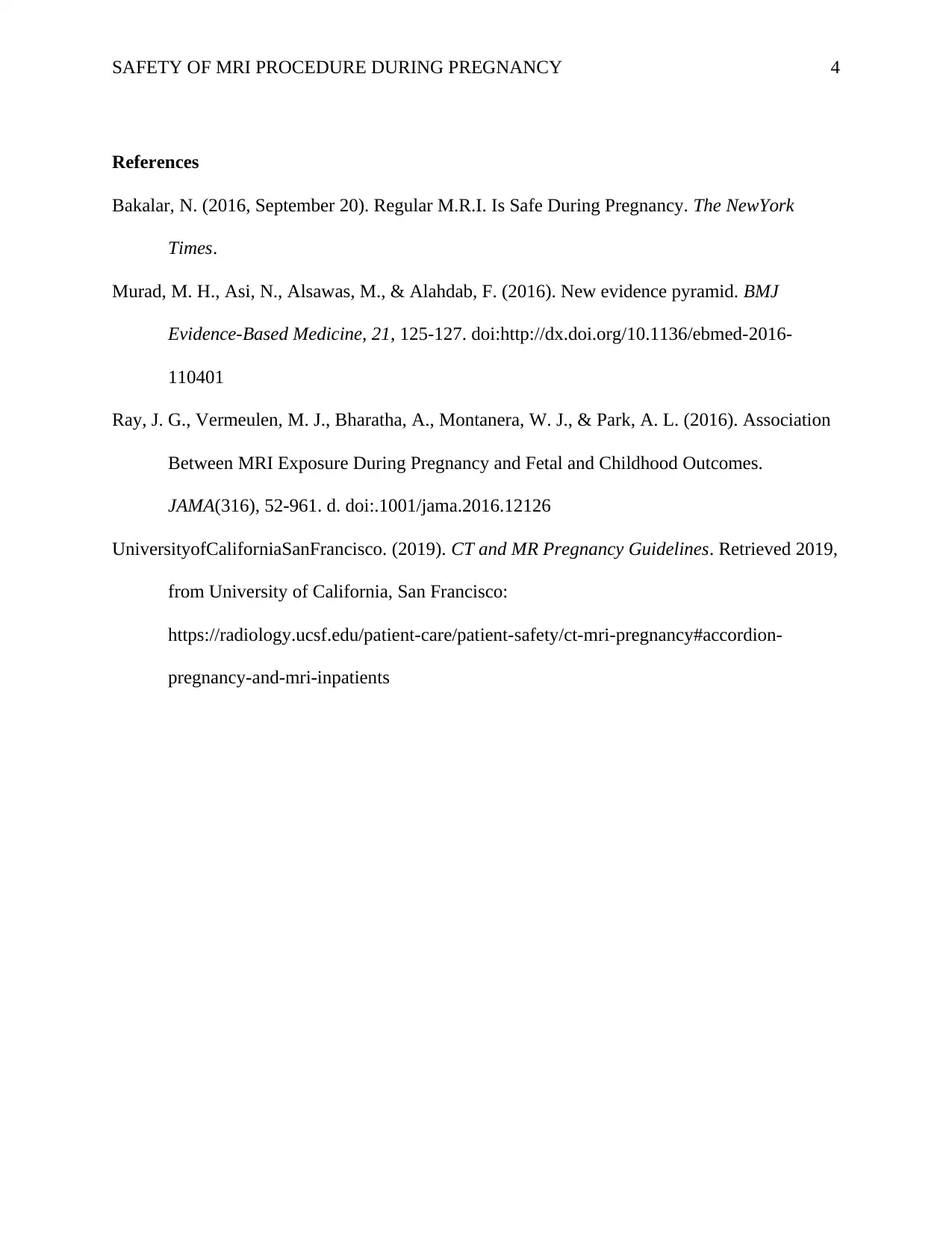Comprehensive Analysis: MRI Safety Procedures During Pregnancy
VerifiedAdded on 2022/10/07
|4
|761
|38
Homework Assignment
AI Summary
This assignment examines the safety of MRI procedures during pregnancy, drawing on multiple sources to assess potential risks and established guidelines. The student analyzes a retrospective cohort study by Ray, Vermeulen, Bharatha, Montanera, & Park (2016), which supports the existing literature on the safety of using MRI during pregnancy, particularly in the second and third trimesters. The assignment also references guidelines from the University of California San Francisco (2019) regarding the use of CT and MRI during pregnancy, emphasizing the avoidance of gadolinium and adherence to ACR guidelines for pregnant employees. Finally, it includes an article by Bakalar (2016) which suggests MRI is safe during pregnancy unless contrast agents like gadolinium are used. The student ranks the sources based on reliability, and provides a reference list. The assignment highlights the importance of considering the level of evidence when evaluating the safety of medical imaging during pregnancy, especially concerning the use of contrast agents like gadolinium.
1 out of 4










![[object Object]](/_next/static/media/star-bottom.7253800d.svg)